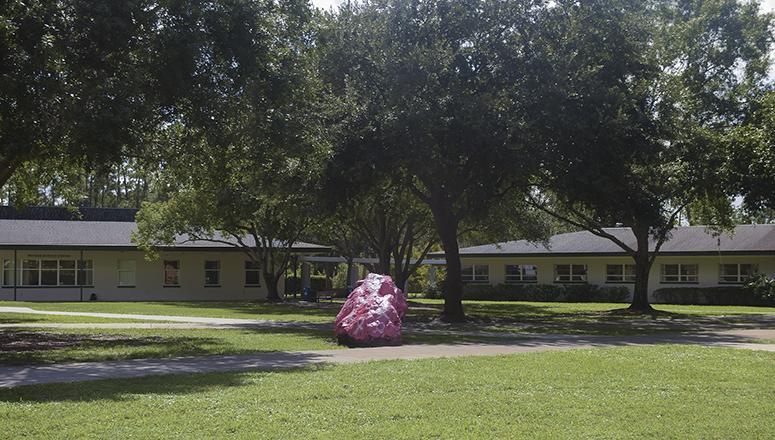At Trinity Prep, the student body isn’t the only thing that is bright. Our prime location in the Sunshine State gives us incredible solar potential; in fact, Florida has the third-best conditions of any state for converting sunlight into solar energy. Yet, our campus is letting that energy go to waste.
The Clean Energy Authority reported that Florida has only the 17th-best level of solar power in the United States, which, considering we have our state nickname’s reputation to uphold, is atrocious. So I propose that we begin fixing this problem right here on campus by installing solar panels at Trinity.
Solar panels save power by using sunlight instead. However, because solar panels can’t absorb 100 percent of the light around them—the actual percentage is between 15 and 22—they usually aren’t a replacement for the electricity from a power plant. Instead, they decrease the amount of electricity needed by supplying an alternative source, which both is good for the environment and decreases the cost of electricity bills.
With these benefits, one wonders why solar panels are are not installed on every building in the world.
“I think it’s the initial cost that deters people,” science teacher Whitney Lehman said. “They cost a lot of money to get, and it takes a while to raise that type of money.”
According to Lehman, another deterrent could be the time it takes to see a difference in energy expenses after they are installed.
To address the issue of cost, there is a small movement to increase the use of solar panels in the Orlando area. The Orlando Sentinel reported on Nov. 8, 2015 that the small group East Orange Solar Cooperative has been helping homeowners find and install solar panels for prices that are one-third cheaper than prices that those individuals could find on their own.
The organization has helped around 50 homes in the I-4 Corridor install solar panels at the time of the article. Despite the growing numbers of home-installations, Central Florida is yet to be the home of a school that uses solar power.
Because this is Trinity’s first year under the direction of Head of School Byron Lawson, it has become a year for change.
“This is a strategic planning year, and part of the strategic plan is to discuss sustainability in all its forms,” Lawson said. “If a policy recommendation comes out that we should target less participation in the grid and a greater use of renewable sources, or specifically sun energy, we’ll do our best to head in that direction.”
Overall, the costs and benefits of solar energy depend on how effective Trinity hopes the investment will be.
One of the first questions that crosses any prospective solar panel purchaser’s mind is: how many solar panels will I need? For Trinity to be completely self-sustaining, we will need 3,229 panels.
To explain these numbers, let’s do some math. Based on Trinity’s annual electricity bill, our school uses an estimated 197,570 kilowatt-hours of electricity per month.
To generate that electricity, we would need a 3,229-panel system of 340-watt solar panels. Such a system would cost a little less than $5.5 million for both the panels and their installation; however, this price would not be paid all at once.
Some payment plans for solar panel systems are paid over many years and require a $0 down payment. Solar Nation explains that customers can pay off the cost of the panels over a 20-year period.
Following this method, Trinity could reduce its electricity cost without having to spend a large sum of money all at once—which allows our school to fundraise and cut costs in a realistic time frame.
Though this is a lot of money, the benefits are well worth it in both the short and long terms.
The most obvious benefit of solar panels is that we decrease our energy consumption, which helps the environment.
Next, we have the cost benefits. It is difficult to stare the sum of 5.5 million dollars in the face and see it as a benefit. Yet, the expenses that the solar panels will cut at Trinity are perhaps their most attractive promise.
With solar panels covering our entire electricity cost of $290,000 each year, they will have saved enough money to pay for themselves in 19 years. If we follow the plan to pay off the cost of solar panels over the course of 20 years, we would practically break even every single year because our payment would be proportionate to the money that the solar energy saves.
After breaking even, $290,000 becomes a profit. According to Sunbridge Solar, the lifespan of a solar panel is between 25 and 30 years. Therefore when all costs are considered, solar power can save Trinity anywhere from $1.74 to $3.19 million, which becomes funding for other programs.
“I think there’s a part of every school leader who wants to get every dollar possible to teaching and learning,” Lawson said. “If we spend $100,000 on an electric bill, that’s $100,000 that I’m not contributing to teacher salaries, professional development, student programs, visiting artists and guest speakers.”
By investing in solar energy now, we can increase the revenue of our school in the long run, creating improvements that will have a tangible effect on the lives of everyone on campus.
Though the startup cost is great, it is well worth the immediate environmental benefits and the long-term economic benefits. By investing in solar panels, we can create a truly bright future for Trinity.








